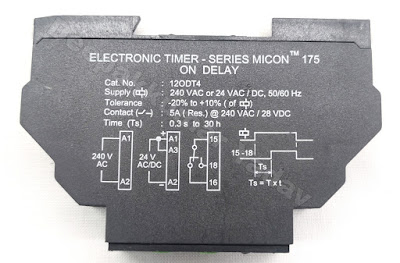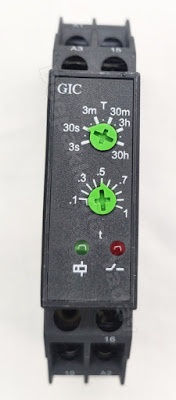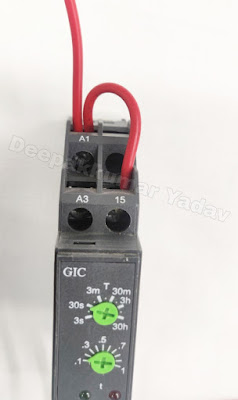Working Principle of Timer
- The on-delay relay timer provides a change to the state of the contacts that are controlled by the energizing of the timer.
- The on-delay relay timer can be set or programmed to a predetermined time and this is called the preset time.
- Preset time can be as low as milliseconds to hours and even days but usually, in the industrial control system, it is set to seconds and minutes.
- Once the coil of the timer is energized the timer starts to count from zero to the pre-set time, this count is known as the accumulated time.
- When the preset time and accumulated time are equal the contacts of the timer change their state; contacts that are normally open when the coil was not energized go closed and contacts that are normally closed will change to open.
- The contacts of the timer will stay in their changed state for the same amount of time the coil is energized.
- When the power is removed from the coil of the timer the accumulated time returns to zero and contacts return to their original state.
👇Follow us on Social Media👇
YouTube Channel🎥 :- www.youtube.com/deepakkumaryadav02
Instagram📸 :- www.instagram.com/deepakkumaryadav02
↓↓↓↓↓↓↓↓↓↓↓ PHOTOS ↓↓↓↓↓↓↓↓↓↓↓
Created By :- Deepakkumar Yadav
Tags:
Electrical










Penal kisi bhi project ke liye bana sakte hai sir
ReplyDelete